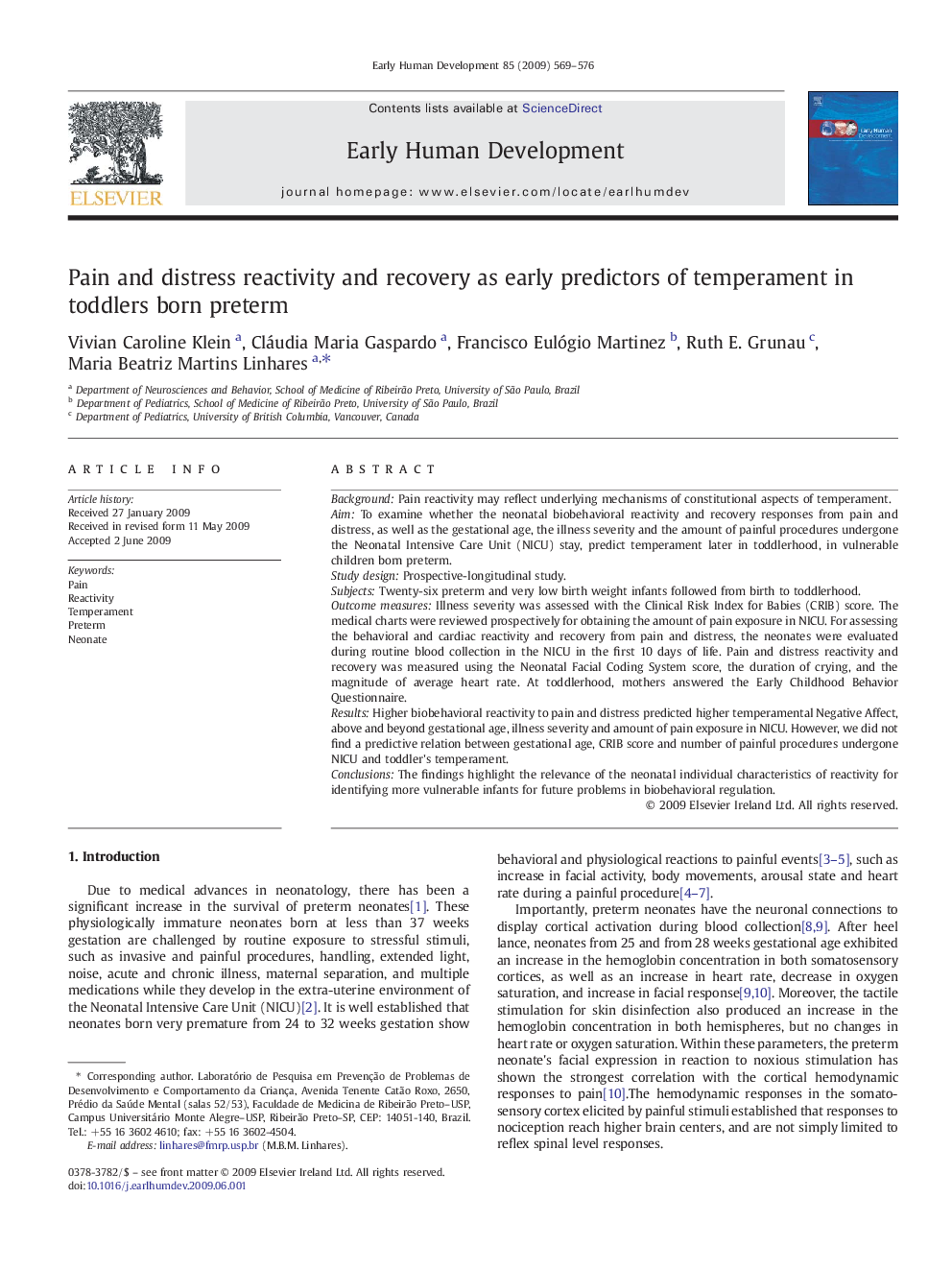| Article ID | Journal | Published Year | Pages | File Type |
|---|---|---|---|---|
| 3918539 | Early Human Development | 2009 | 8 Pages |
BackgroundPain reactivity may reflect underlying mechanisms of constitutional aspects of temperament.AimTo examine whether the neonatal biobehavioral reactivity and recovery responses from pain and distress, as well as the gestational age, the illness severity and the amount of painful procedures undergone the Neonatal Intensive Care Unit (NICU) stay, predict temperament later in toddlerhood, in vulnerable children born preterm.Study designProspective-longitudinal study.SubjectsTwenty-six preterm and very low birth weight infants followed from birth to toddlerhood.Outcome measuresIllness severity was assessed with the Clinical Risk Index for Babies (CRIB) score. The medical charts were reviewed prospectively for obtaining the amount of pain exposure in NICU. For assessing the behavioral and cardiac reactivity and recovery from pain and distress, the neonates were evaluated during routine blood collection in the NICU in the first 10 days of life. Pain and distress reactivity and recovery was measured using the Neonatal Facial Coding System score, the duration of crying, and the magnitude of average heart rate. At toddlerhood, mothers answered the Early Childhood Behavior Questionnaire.ResultsHigher biobehavioral reactivity to pain and distress predicted higher temperamental Negative Affect, above and beyond gestational age, illness severity and amount of pain exposure in NICU. However, we did not find a predictive relation between gestational age, CRIB score and number of painful procedures undergone NICU and toddler's temperament.ConclusionsThe findings highlight the relevance of the neonatal individual characteristics of reactivity for identifying more vulnerable infants for future problems in biobehavioral regulation.
